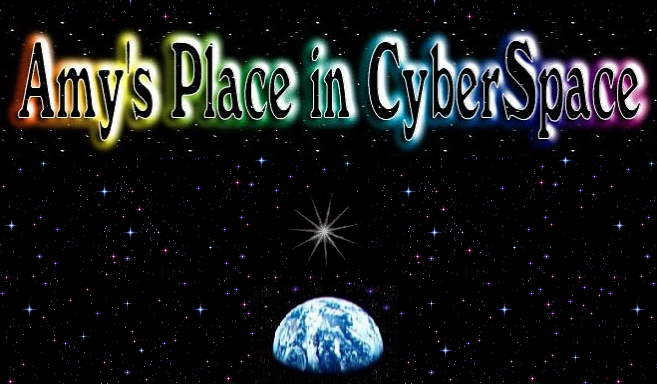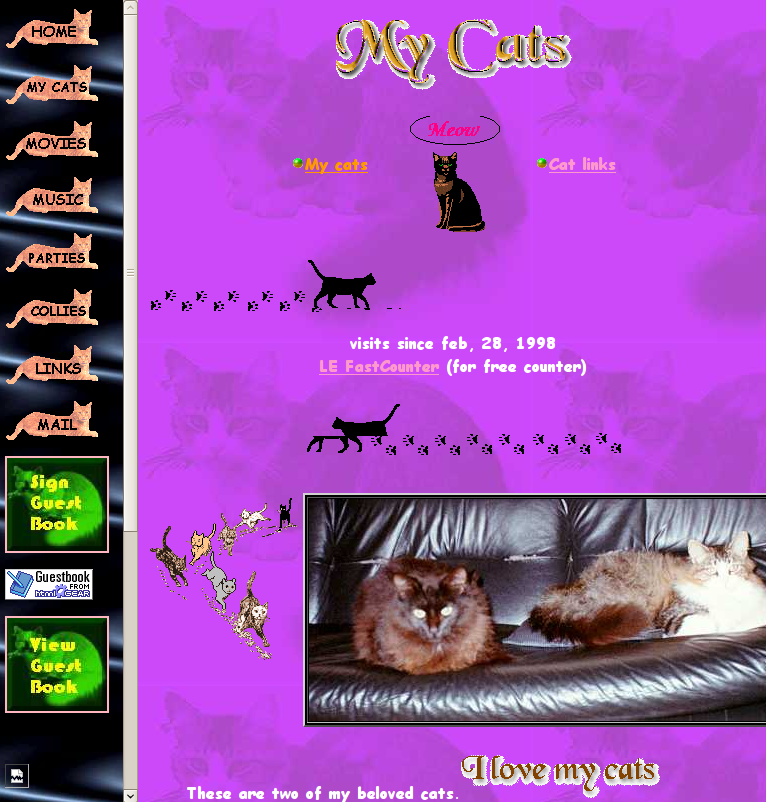Water becomes sky, sky becomes water in this epic, background image. On today’s high resolution displays it is definitely an interesting experience. It especially shines compared with such a setting:

Water becomes sky, sky becomes water in this epic, background image. On today’s high resolution displays it is definitely an interesting experience. It especially shines compared with such a setting:


Even though there is no shortage of star backgrounds on Geocities, it is still a quite rare occasion to find an astronomy page with an outer space motive. Astronomy for All by Amy is such an exception.

Original URL: http://www.geocities.com/Skunk8/

Original URL: http://www.geocities.com/Heartland/Ridge/4134/
![]()
Original URL: http://www.geocities.com/Hollywood/Boulevard/8329/
 The Dancing Girl is an animation that was used on many web pages. It appears in every free animated GIF collection in the category “people” or the subcategory “dancing people”.
The Dancing Girl is an animation that was used on many web pages. It appears in every free animated GIF collection in the category “people” or the subcategory “dancing people”.
I used it for the first time in 1998 for the Rhizome.org splash page. A free girl from a free collection dancing among copyright decoration was my way to insist that “information wants to be free”. Later she became my role model. To be like her I chose the career of an Animated GIF model. And of course when Dragan and me were compiling the Comparative Gallery of Animated GIFs and Glitter Graphics, we couldn’t avoid including her.
Because she is a very well made animation: perfectly looped, well cut, with complex movement: legs, skirt, arms, hair … and a forgotten pixel in the lower right corner of the file which brings a special amateur touch to the production. It became a sort of authenticity watermark, a signature of the anonymous author. Many users saved the file to their hardisks and servers, but nobody dared to open it and remove the pixel.
Yesterday we opened the file,1 the one that is in GIF-Welt collection and found out that the creator of Dancing Girl is not anonymous. The comment inside the file states “Created by Chuck Poynter”. We couldn’t believe our eyes. To find a name in the comment of an animated GIF is a real stroke of luck. Most files never had one because their authors didn’t care or preferred their files to be some bytes smaller than if signed. It could also happen that the signature was removed by ungrateful appropriators. This was exactly the case with the dancing girls reincarnations we used before, they had the signature removed. (To save 24 bytes!)
The search brought swift but sad results. Chuck Poynter, or Charles F. Poynter, born in Arkansas in 1937, died in Arkansas in 2001. He served in the US Air Force, was married and father of 3 children. One of them, Chuck Jr., recently restored the pages of his father.
Why would a former man of arms in his late fifties start to make animated GIFs and produce over 500 of them in the period of one and a half years? Chuck Poynter gave an answer to this question on his news page, in between the infos about updates:
Chuck Poynter’s collection is very uneven. There are some great animation, like piano, beach ball, or a cat



And some really questionable ones, like “a dog” , Skunk, or Gold Note.



I think Poynter’s enthusiasm about using the software Cool 3d led his production into a wrong direction.
His collection includes a lot of military jets, that I believe I sotted earlier in Pentagon neighborhoods. And many cars, dancing and walking people, animals and early web specific elements, like “Welcome” or “Links” animations and animated AnimatedGIFs:
 .
.
Interesting that in the beginning Chuck Poynter was organizing his files by months. If to believe the chronology, Dancing girl was made in September 1996. In May 1997 he made a smaller version of the file  , which has all the problems of resized GIF of that time: especially the carefully drawn pixel pattern of her shirt suffers from moirées, the former beautiful outlines are flickering randomly.
, which has all the problems of resized GIF of that time: especially the carefully drawn pixel pattern of her shirt suffers from moirées, the former beautiful outlines are flickering randomly.
Dancing Girl is not only the star of Chuck Poynters collection, it was obviously his own favorite as well. At least it appears on the top of all the pages on his site. He made quite an amount of people in motion, but in a diferent style.


We don’t really know if the Dancing Girl was Chuck Poynter’s own drawing, but I’d assume it (my assumption was wrong, read more on the origins of the graphic), because he was serious about giving credit to primary sources — for example, as many others, he played around with the Dancing Baby , and states in the comment: “Edited and GIF animated from babycha2.avi by: Chuck Poynter”2
, and states in the comment: “Edited and GIF animated from babycha2.avi by: Chuck Poynter”2
I’d like to thank Chuck Junior for keeping his father’s files online. “He was a great man and we will always miss him”, he says on the top of the restored index of “Original Animation for Download“.
If I may, I’d like to add here that Chuck Pointer was a great user. He made animated GIFs and MIDI music, he made his files suitable for the use on pages of others, he made sophisticated framesets and table layouts, he made links. He participated in the first browser war on the side of Netscape. Chuck Poynters graphics, music and layouts are very medium specific. He was building the World Wide Web and did it with competence and passion. We miss him.
Continue reading Dancing Girl File Not Closed Yet
Hulagirl is the tag for the posts about the dancing girl.
![]()
And I thought I had seen all possible “best viewed with” messages already …
Original URL: http://www.geocities.com/SunsetStrip/Hotel/8658/

Original URL: http://www.geocities.com/SunsetStrip/Arena/3960/
On his intro page Simon from SiliconValley/2877/ instructs users on how to survive in Browser War
“Please select your browser: Netscape v2.0 (or higher) or Other.
IMPORTANT: Please make sure you don’t select Netscape v2.0 if you’re not using it. Otherwise you might have problems viewing my page. Why? Because… This page is Netscape 2.0 enhanced. If you don’t have it and want it, get it now.”
Original URL: http://www.geocities.com/SiliconValley/2877/